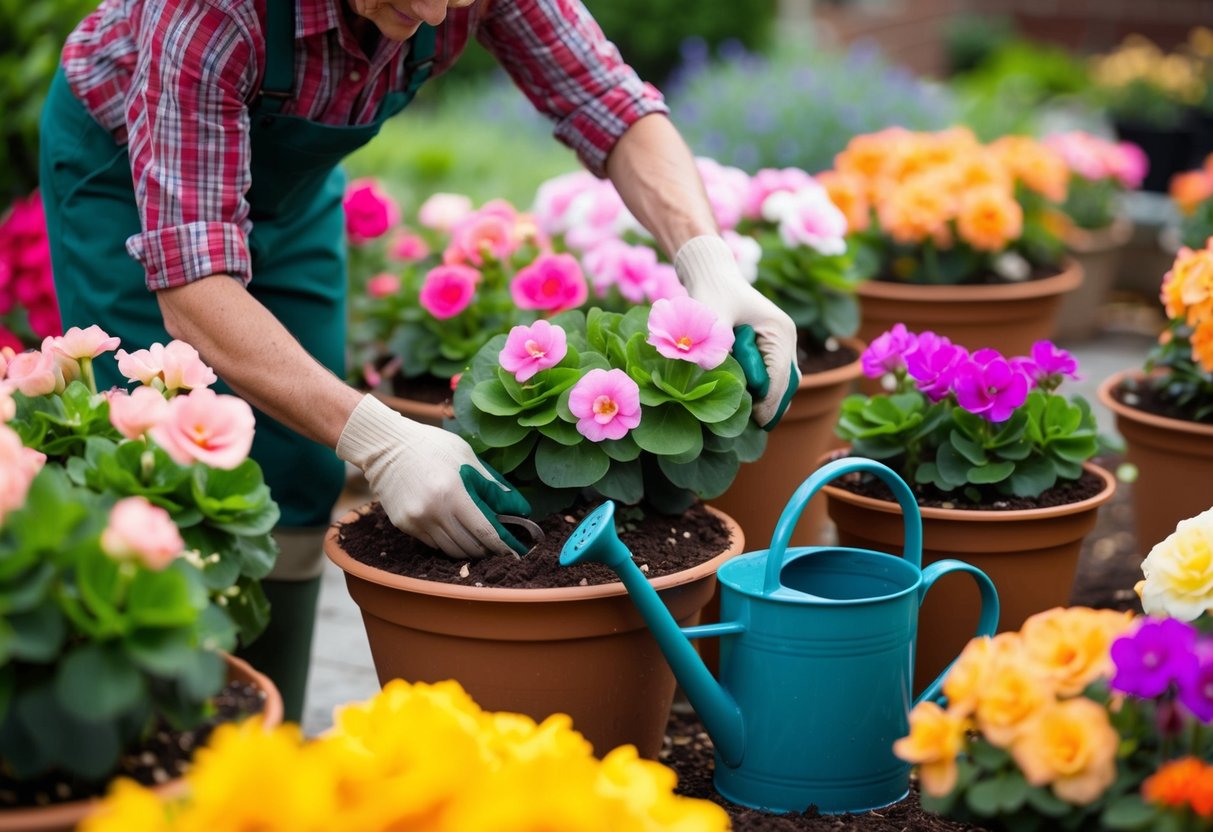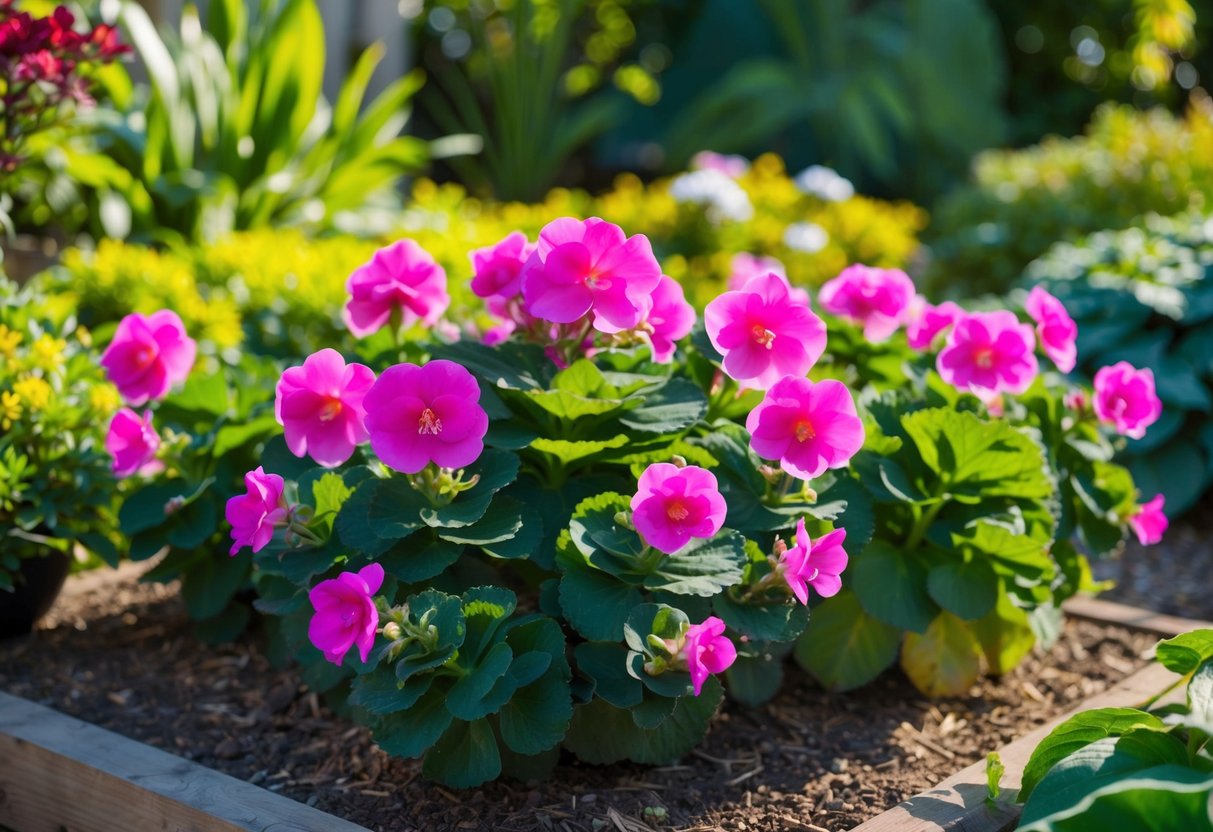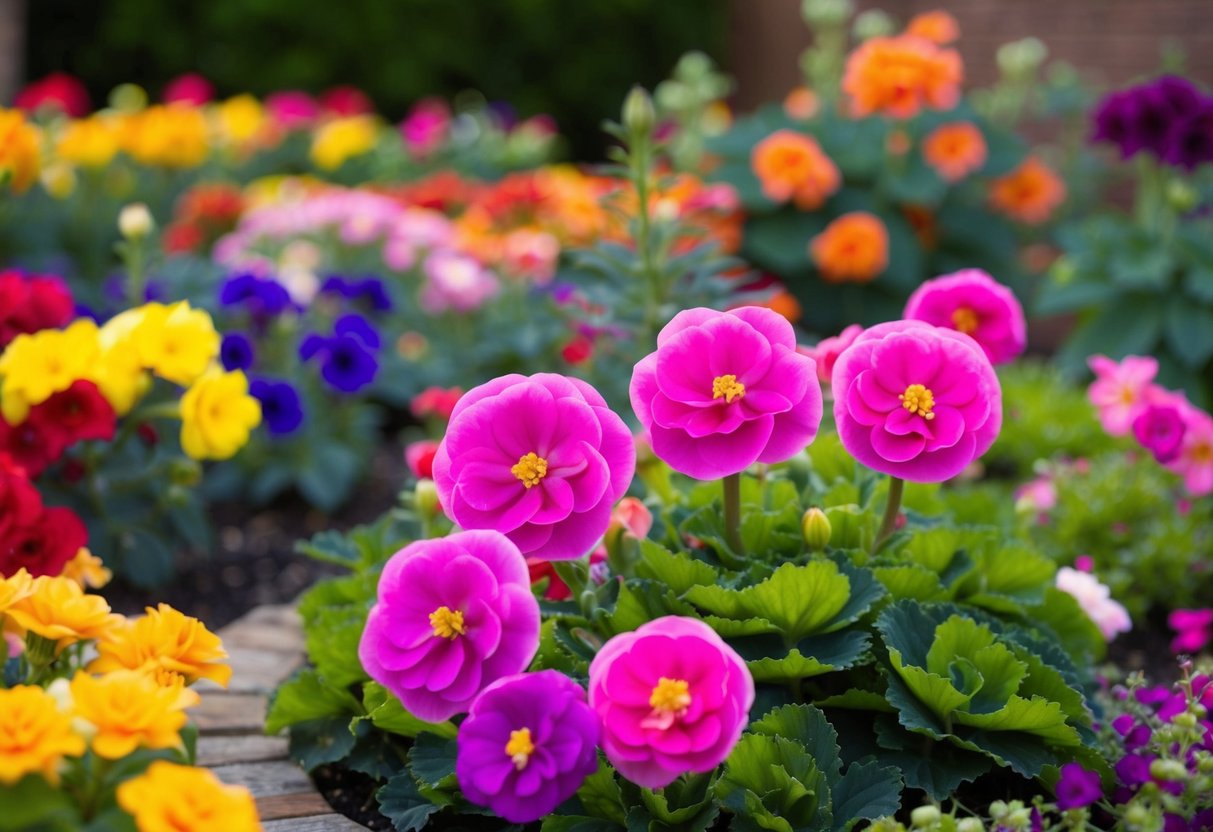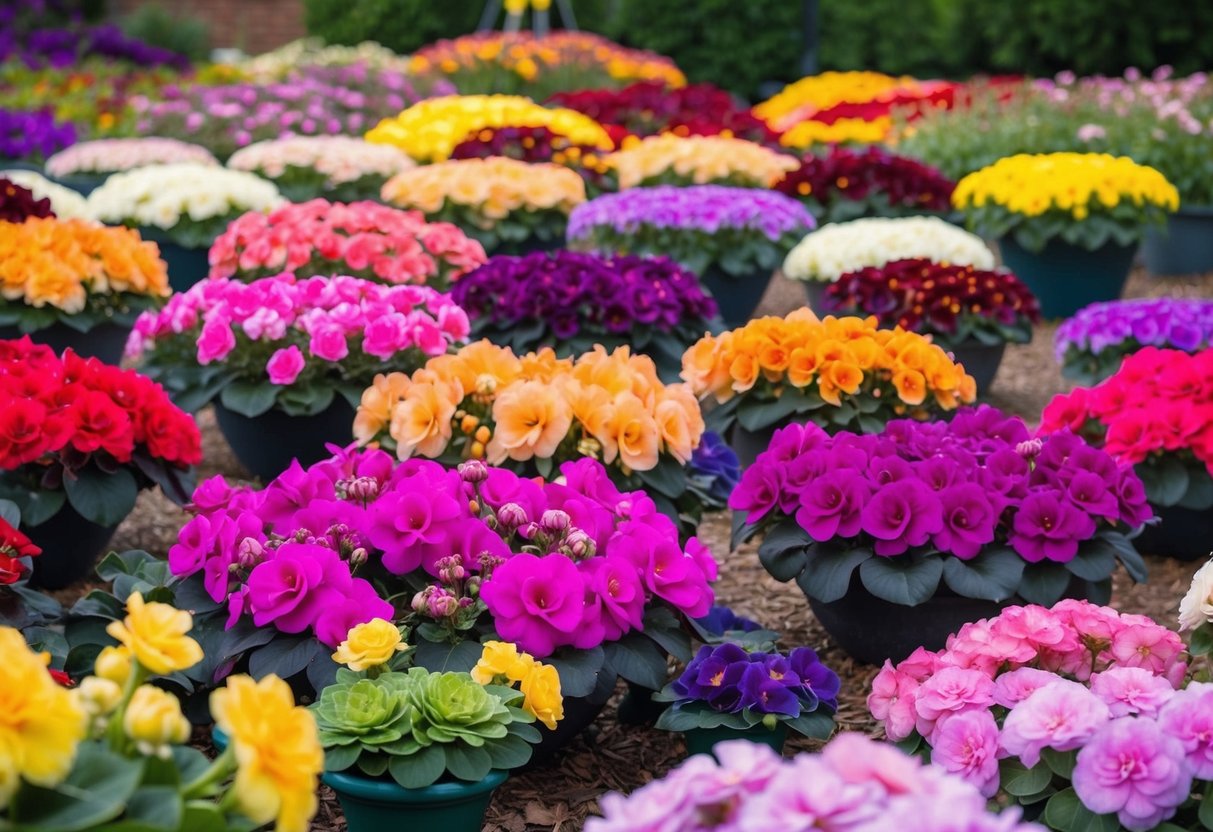Do Non-Stop Begonias Come Back Every Year? Understanding Their Growth Cycle
When choosing plants for your garden, begonia enthusiasts often wonder about the nature of their vibrant blooms. If you’re wondering whether non-stop begonias will grace your garden every year, this article is for you. Non-stop begonias are usually treated as annuals, which means you need to replant them each year. However, with the right care, you can keep them thriving for more than one season.

These begonias are known for their continuous blooming and colorful display. They don’t tolerate frost, so they can’t naturally survive the winter in cold climates. If you live in a warmer area or manage to keep them indoors, you might enjoy their blooms for a longer time. Discover some tips to help these beautiful plants continue to brighten your space.
Exploring ways to expand their lifespan can be both rewarding and exciting. With proper care, your begonias can flourish, adding charm and vibrancy to your home. You’re about to learn how to make the most out of your gardening efforts with these stunning flowers.
Understanding Begonias

Begonias are popular for their vibrant colors and unique foliage. They can be tuberous, wax, angel wing, rex, and others. Each type has its own care requirements and lifespan, making them either annuals or perennials.
Types of Begonias
There are many types of begonia, each with its own unique look and care needs. Tuberous begonias are known for their large, colorful blooms, making them a favorite for gardeners. They thrive in shaded areas and require well-drained soil. Wax begonias are versatile and can grow both indoors and outdoors. These are hardy with shiny leaves and small flowers.
Rex begonias are admired for their stunning leaf patterns rather than blooms. They prefer high humidity and indirect light. Angel wing begonias have distinctive wing-shaped leaves and can produce lovely pink or red flowers. Cane begonias, which include angel wings, have tall stems and can grow quite large. Each type offers something special, making it easy to find a begonia that suits your space and aesthetic.
Begonias Life Cycle
The life cycle of begonias varies depending on the type. Tuberous begonias grow from underground tubers. These tend to bloom in summer and need to be stored in winter in cooler climates. Rhizomatous begonias, on the other hand, grow from rhizomes. They can be grown indoors throughout the year with consistent temperatures and care.
The life span of begonias is influenced by their growing conditions. Indoor begonia varieties can last longer than those kept outdoors where they may face harsh weather. Regular watering and the right amount of sunlight help prolong their life. Whether your begonia is tuberous or rhizomatous, understanding its life cycle is key to keeping it thriving year after year.
Annuals vs Perennials
When choosing begonias, it’s essential to know if they are annuals or perennials. Annual begonias live for one growing season. They provide vibrant flowers during the summer and need replanting the next year. Wax begonias often fall into this category. In contrast, perennial begonias can survive multiple years. These include some hardy varieties of tuberous and cane begonias.
Perennials can continue to bloom each year if they receive proper care and winter protection. Knowing the difference between annuals and perennials helps you plan your garden better, ensuring beautiful blooms every season.
Planting and Care Advice

Planting your non-stop begonias in the right conditions and giving them proper care will help them thrive. Learn about the best lighting, watering, and soil needs, as well as tips on keeping them healthy through winter.
Ideal Planting Conditions
Non-stop begonias love bright, filtered light. They thrive if planted where they get morning or evening sun and can even tolerate shade. Avoid the hot afternoon sun to prevent leaf scorch. Use well-draining soil, as good drainage is crucial to prevent root rot.
Before planting, check the frost dates in your area. Planting should occur after the risk of frost has passed to protect these tuberous plants. Consider potting begonias to bring them indoors during colder months if you live in a cooler climate.
Begonia Care Tips
Keep your begonias happy with regular watering. Water them once or twice a week, depending on the weather, to ensure the soil stays moist but not soggy. Check the topsoil to ensure it’s slightly dry before watering.
Feed your begonias every two weeks with a balanced fertilizer. This supports their growth and enhances flowering. Deadhead spent flowers regularly to maintain their appearance and encourage new blooms. Pruning is minimal but can help shape the plant.
Wintering Begonias
If you experience cold winters, prepare to keep your begonias safe from frost. Before the first frost hits, move potted begonias indoors. You can also dig up begonia tubers, dry them, and store them in a cool, dark place until spring.
Maintain a stable temperature and reduce watering during the winter months. This period of dormancy helps the plants conserve energy and thrive once replanted. With these steps, your begonias can potentially bloom again come the warmer season.
Troubleshooting Begonia Issues

Non-stop begonias can face various challenges. Knowing how to tackle diseases like root rot and managing pests such as aphids ensures your plants remain healthy and vibrant.
Addressing Common Diseases
Overwatering often leads to root rot. Make sure your begonias have good drainage and only water them when the topsoil feels dry. If you notice mushy stems or a foul smell, it could be a sign of this disease. You might want to remove affected parts and repot in fresh soil.
Good air circulation helps prevent fungal problems. Position your begonias where they can get light breezes. This helps reduce mildew, another common issue. If leaves start looking powdery, consider using a fungicide designed for ornamental plants.
Deadheading, or removing spent blooms, is essential. This keeps the plant looking tidy and prevents any potential disease buildup. It also encourages new blooms to form, helping your begonia stay vibrant.
Managing Pests and Problems
Aphids, spider mites, and thrips can attack begonias. These pests often cluster on the underside of leaves. A simple way to control them is by using insecticidal soap or a gentle spray of water mixed with a few drops of dish soap.
If leaves look faded or leggy, check the environment. Begonias need bright, indirect light; too much shade can lead to weak stems. Adjusting the light conditions may solve the issue by helping the plant grow fuller and healthier.
Keep an eye on air circulation, as stagnation can invite pests. Placing a fan nearby on low settings can help keep the air moving around your plants. This environment change can deter many unwanted pests from settling in.
Seasonal Begonia Concerns

Taking care of non-stop begonias requires attention to seasonal changes. You need to know how to encourage growth in spring and protect them during winter.
Spring Revival
In spring, begonias start their growth after a cold period. You can replant using either seeds or tubers. Begin indoors, providing warmth and sunlight. When the weather gets warmer, transition your begonias outside.
Sunlight is key. Morning sun helps growth while avoiding the harsh afternoon rays. Too much shade can stunt growth, so a balance is important. Since begonias are annuals, they need replanting each year unless they are perennial varieties. Perennials can reappear if weather permits.
Securing Begonias in Winter
Protect begonias from freezing temperatures to ensure they survive winter. If you have tuberous begonias, dig up the tubers before the first frost. Store them in a cool, dry place until spring.
For those in mild winters, some hardy begonias like Begonia grandis can survive outdoors without extra protection. If your climate allows, mulch the soil to shield from light frost. Move potted begonias indoors to prevent weather damage. Aim to keep leaves healthy and strong by avoiding direct exposure to the cold. Regularly check them for any signs of frost damage.
Innovative Begonia Displays

Explore creative ways to showcase begonias in both indoor and outdoor spaces. By focusing on versatility and beauty, you can enhance any area with your begonia displays.
Indoor Showcasing
Transform your home with begonias by using them as stunning houseplants. Rex begonias, with their striking foliage, make excellent choices for adding color and texture. Place them in areas with indirect light. Use decorative pots or containers to complement your home decor.
Consider hanging baskets for a unique look. Angel wing begonias work well as they cascade beautifully. Hang them near windows for the best sunlight exposure. Keeping indoor begonias healthy involves regular watering but avoid overwatering. You can establish an eye-catching display with vibrant colors that capture attention when using plants like wax begonias.
Outdoor Arrangements
Create brilliant outdoor displays by incorporating begonias in your garden. Use wax begonias as excellent bedding plants. Their bright flowers can complement any flower bed arrangement.
Plant them in areas with partial sun to keep them vibrant throughout the season.
Hanging basket displays featuring begonias add vertical interest. Visit local garden centres for a wider selection. Try combining begonias with other tropical plants for a unique, lush look.
Regularly check outdoor begonias for pests and ensure they receive enough moisture. These tips can help keep your garden looking fresh and inviting.
Begonias are versatile, making them perfect for diverse garden styles.







